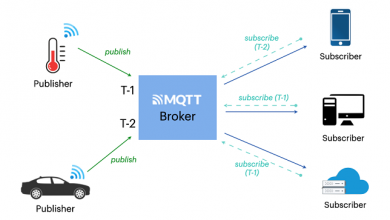The 5G Impact: Automotive & Its Material Components

With new dimensions emerging technology in electronics industries, connectivity is being envisioned as the core of every developmental ecosystem. The increased digitalization, growing demands in auto electrifications and intelligent connectivity system have shown remarkable dependency on 5G in automotive industries in India.
What is 5G?
5G is the 5th generation network which enables a new kind of network that is designed to connect virtually everyone and everything together including machines, objects, and devices.
This generation of wireless connectivity claims to offer higher bandwidth, super-fast data, and lower latency.
5G’s promise of deeper, more reliable connectivity and technology that will revolutionize medicine, automotive, electronics, and other industries is within reach. Once the 5G infrastructure is built out, the experiences that mankind would be able to have will be mind-boggling. Faster movie downloads on our phones are just the beginning- we’re talking real-time critical connections that will expand the internet of things and allow in-the-moment, critical operations – think of automated cars or doctors performing sensitive surgeries from hundreds of miles away via live feed.
Talking about future mobility, 5G implies vehicle-to-vehicle communication in real-time.5G could deliver reliable connections with lower latency. The reliable, low-latency, high volume date transfer enabled by 5G unlocks the potential for V2X (vehicle-to-everything) or V2N (vehicle-to-network), and specifically V2V (vehicle to vehicle) — that in turn unlocks the potential for a variety of features that enhance road safety and convenience for the user. Futuristically, knowing the speed and status of other vehicles in the same area enables a vehicle to be reactive to others without depending on the driver, being aware of variable speed limits and other roads signs also.
5G networks will connect IoT hardware devices (data units) to form smart energy grids at both the city and building scale, enabling the more efficient / cost effective management of renewable energy storage and delivery to the automotive system. Energy production will also become more efficient as demand fluctuations are evened out by smart consumption.
How will 5G impact vehicles and their material components?
5G might lag behind other transformative technologies in terms of readiness, many key technology decision makers believe 5G will have a high-to-significant impact within their industry in the next three years With the advent of 5G rollout scheme, the time is now for materials companies to identify the relevant trends, technologies, and needs so that they can spot potential opportunities and make their investments.
Studies reflect that 5G is not expected to spur the introduction of new devices in the vehicle. Rather, it will have a significant impact on existing devices and exacerbate design challenges.
Looking at key design challenges, few of the verticals could be explored.
Key Design Challenges
1.Antenna:
In current vehicle Human Machine interface system, consumers want bigger screens with more functionality. To meet demand for infotainment and streaming, vehicles will need enhanced connectivity & more antennas.
Antennas are nothing but receptor for the connected car. They receive signals transmitted from radar, FM/AM/DAB radio, GPS, cellular, and satellite. Different antennas receive different frequency ranges which are mostly packaged together e.g., “shark fin” for design and assembly0. On average, connected car expected to have 15-20+ antennas. To receive higher number and frequencies of signal, an efficient antenna system design is inevitable.
Impact of 5G:
Antennas are central to increased transmission of cellular data w/ infotainment & C-V2X.Additional frequencies will mean increased number of antennas in the short-term. Designers, however, want to limit visibility. With receptivity key to connected car, design teams most likely to increase focus on antenna design and placement. As antenna designs are extremely tricky, one needs to be very careful about the signal interference which might cause lots of chaos. Removing the shark fin is where the industry is going. Since the antenna goes under the metallic part of the roof, the heat dissipation has been the greatest pain point and it’s very, very hard to mitigate that.
Hence careful selection and placement of electromagnetic grounding and shielding materials (EMI/EMC) as well as the thermal interface materials are vital in these design systems.
2.Telematic Control Unit (TCU):
Over 90% of vehicle accidents are caused by “human mistakes” like driver distraction. Governments are responding with ADAS standards that solidify the increased importance of sensors and V2X capabilities in the vehicle.
TCU are the nucleus of the connected vehicles which connects them to the cloud, help keep the driver and passengers safe and informative about all the surroundings. It controls wireless tracking, diagnostics, and communication to/from the vehicle. It acts as the modem for internet/cloud connection using 1-2 microchip(s).
Impact of 5G:
As the modem for 5G connection, TCU will be central to connected vehicle. The 5G microchip expected to consume 2.5 times more power. Hence the engineering design team have to place it closer to roof, integrated with “smart antenna” or rolled up into domain controller to build a better communication infrastructure.
Depending on the positions, there areas high interference. Hence the module must be using radiation absorbing materials (EMI/EMC) so that all the waves are precisely received by the module but nothing around the module. Another critical observation is, if the module is placed inside the vehicle, and if the vehicle stats to heats up and the whole module is baked. Hence solution for better thermal dissipation around the module is also pivotal.
Domain Control Unit (DCU):
Today’s average luxury vehicle has 100 ECUs and 2.5 miles of wiring. Consolidation of ECUs into domain control units (DCU) creates new segment of high-value and high-performance computing units starting with cockpit & ADAS functions.
Domain controller units are nothing but the consolidated system of related electronic control units (ECUs). It is basically an embedded system that controls several electrical systems associated with an advanced motor vehicle. We could see their presence in Infotainment system, ADAS or safety domains, chassis and powertrain as well.
Impact of 5G:
Domain controllers have primarily emerged out of ECU consolidation trend, irrespective of 5G adoption. This trend predicts that most of the OEMs will run on domain controllers within 10 years, shifting their gears from complicated clutters of ECUs. As the 5G would require more efficient sourcing, networking, cabling, expertise consolidation, DCU would be the go-to design technology.
Again, when we roll the TCU up, it must have some more protection if it’s in a domain controller as opposed to if it’s a standalone unit. EMC would be a concern to be addressed in a domain controller. In my experience, the heat dissipation is becoming an increasing problem. As these chips become more powerful, [domain controllers] are putting more heat into a concentrated area, heat dissipation is becoming an increasing problem.
Summary of Common pain points & Design challenges
5G might lag compared to other transformative technologies in terms of readiness, but many key technology decision makers believe 5G will have a high-to-significant impact within their industry in the next three years. As OEMs develop autonomous vehicles –motivated in part by a shared mobility future –vehicles will become increasingly software-driven. Higher processing power will require enhanced thermal & data transmission solutions.5G will significantly accelerate these trends across automotive segments. The automotive industry is on track to become the largest market for 5G solutions in 2023.
Author:

Pranati Sahoo, PhD
Senior Technical Engineer-Consumer Electronics
3M India
Dr. Pranati Sahoo is Senior Technical Engineer with Electronics & Materials Solutions Division of 3M and is an expert in thermal management & electronics materials that’s being used by 5G ,Power electronics & Consumer Electronics. She has done her PhD in Material Science & Engineering from University of Michigan (Ann Arbor, USA), after doing Masters in in Material Chemistry from University of New Orleans (Louisiana, USA), and MS in Chemistry from National Institute of Technology, (NIT, Rourkela).
Published in Telematics Wire



